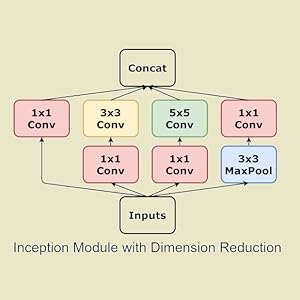Description
Price: $9.99
(as of Jul 04, 2024 21:58:47 UTC – Details)
Why this book?
Are you looking for a book where you can learn about deep learning and PyTorch without having to spend hours deciphering cryptic text and code? A technical book that’s also easy and enjoyable to read?
This is it!
How is this book different?First, this book presents an easy-to-follow, structured, incremental, and from-first-principles approach to learning PyTorch.Second, this is a rather informal book: It is written as if you, the reader, were having a conversation with Daniel, the author.His job is to make you understand the topic well, so he avoids fancy mathematical notation as much as possible and spells everything out in plain English.What will I learn?
In this second volume of the series, you’ll be introduced to deeper models and activation functions, convolutional neural networks, initialization schemes, learning rate schedulers, transfer learning, and more.
By the time you finish this book, you’ll have a thorough understanding of the concepts and tools necessary to start developing, training, and fine-tuning computer-vision models using PyTorch.
If your goal is to learn about deep learning models for computer vision, and you’re already comfortable training simple models in PyTorch, the second volume is the right one for you.
What’s InsideDeep models, activation functions, and feature spacesTorchvision, datasets, models, and transformsConvolutional neural networks, dropout, and learning rate schedulersTransfer learning and fine-tuning popular models (ResNet, Inception, etc.)
From the Publisher




Is this book for me?
Daniel wrote this book for beginners in general – not only PyTorch beginners. Every now and then he will spend some time explaining some fundamental concepts which are essential to have a proper understanding of what’s going on in the code.
If your goal is to learn about deep learning models for computer vision, and you’re already comfortable training simple models in PyTorch, this volume is the right one for you.
In this second volume of the series, you’ll be introduced to deeper models and activation functions, convolutional neural networks, initialization schemes, learning rate schedulers, transfer learning, and more.
By the time you finish this book, you’ll have a thorough understanding of the concepts and tools necessary to start developing, training, and fine-tuning computer-vision models using PyTorch.
What’s inside Deep models, activation functions, and feature spaces Torchvision, datasets, models, and transforms Convolutional neural networks, dropout, and learning rate schedulers Transfer learning and fine-tuning popular models (ResNet, Inception, etc.) … and more!


How is this book different?
This book is written as if YOU, the reader, were having a conversation with Daniel, the author: he will ask you questions (and give you answers shortly afterward) and also make some (silly) jokes.
Moreover, this book spells concepts out in plain English, avoiding fancy mathematical notation as much as possible.
It shows you the inner workings of computer vision models, in a structured, incremental, and from-first-principles approach.
It builds, step-by-step, not only the models themselves but also your understanding as it shows you both the reasoning behind the code and how to avoid some common pitfalls and errors along the way.


“Hi, I’m Daniel!”
I am a data scientist, developer, teacher, and author of this series of books.
I will tell you, briefly, how this series of books came to be. In 2018, before teaching a class, I tried to find a blog post that would visually explain, in a clear and concise manner, the concepts behind binary cross-entropy so that I could show it to my students. Since I could not find any that fit my purpose, I decided to write one myself. It turned out to be my most popular blog post!
My readers have welcomed the simple, straightforward, and conversational way I explained the topic.
Then, in 2019, I used the same approach for writing another blog post: “Understanding PyTorch with an example: a step-by-step tutorial.” Once again, I was amazed by the reaction from the readers! It was their positive feedback that motivated me to write this series of books to help beginners start their journey into deep learning and PyTorch.
I hope you enjoy reading these books as much as I enjoyed writing them!
ASIN : B09R152KC7
Publisher : Self-Published (January 22, 2022)
Publication date : January 22, 2022
Language : English
File size : 20258 KB
Simultaneous device usage : Unlimited
Text-to-Speech : Enabled
Screen Reader : Supported
Enhanced typesetting : Enabled
X-Ray : Not Enabled
Word Wise : Not Enabled
Sticky notes : On Kindle Scribe
Print length : 398 pages
Page numbers source ISBN : B09QNZWW66





